The chaotic subway system is a lifeline for the city’s marginalized poor—and increasingly caught up in politics
The metro rattled along and I readied myself for what lay ahead: The chaos of disembarking at the Al Shohadah (The Martyrs) metro station during the height of Cairo rush hour. Here there’s no waiting for people to get off before others board. Instead, at the previous stop, a well-rehearsed dance occurs as people push and pull the bodies around them to strategically maneuver toward the exit. Then, as the aging doors creak open, a mass of people pours out while another mass pushes in. “Ya gamaa, khosho, khosho!”—“Everyone, go, go!” voices bellow. It’s body-on-body, and it makes me momentarily grateful for the metro’s two women-only cars.
But on this particular Friday afternoon in April as we approached the station a panicked murmur swept through the crowd. People on the platform were running. When the doors opened, shouts rang out, “Kunbulla, kunbulla!”Bomb. Bomb! I hurried out. There seemed to be some smoke ahead, but no other signs of anything serious. A moment later the crowd running away started to head back in the other direction. A new shout rang: “Dukhan, dukhan”—it was just smoke, no great cause for concern. Now there was a renewed frenzy to board again: The bedlam had left some rare open seats.
Cairo’s metro rightfully has a reputation as a crowded and chaotic place. In a worrying sign, this week a car crashed, injuring the driver. But it’s also a reliable lifeline for millions of Cairo’s marginalized poor, the metro’s main riders. Since the start of the 2011 Egyptian uprising, this everyday space has also found itself in the middle of political debate. And now, under strongman President Abdel Fatah El Sisi, it has become part of his effort to control the crowd and impose an image of order and progress in a city with a rhythm of its own.
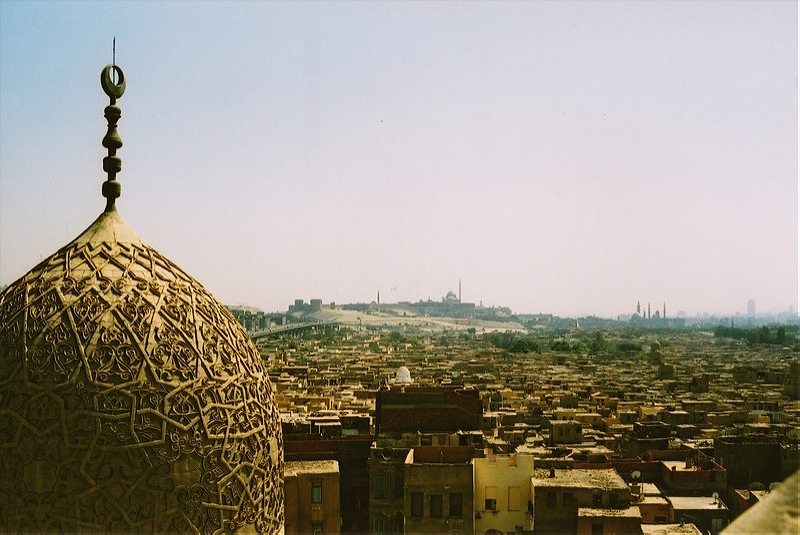
By the next stop the bomb-that-wasn’t seemed largely forgotten and it was business as usual on the metro. A woman in a full-body black abaya boarded with a toddler in tow selling tissues for charity. A slim guy in jeans and a t-shirt with English words that didn’t make sense together pushed through hawking scented soaps. The women passed the time on their phones, making small talk, or staring at each other. And me.
As my spot approached I worked my way towards the door. “Nazla?” a woman behind me asked. “Are you one getting off?” The noun to describe getting off, nazla (nazla for a female), is perhaps the most important word to know for managing Cairo’s public transit. It’s also the same word used to convey that you are going down, like down to protest. But that’s not happening these days in Cairo.
SMALL BOMBS ARE A NEW PHENOMENON IN THE CAIRO METRO
The small bombs, and the panic around them, are a new phenomenon in the Cairo metro. They began after the Sisi-led military ousted Islamist President Mohammed Morsi in July 2013 and initiated a wide wave of repression against the Muslim Brotherhood and opposition voices. It’s a deep step back from the hope after the 2011 Arab Spring revolution toppling longtime strongman Hosni Mubarak that a new kind of political order would fill the void of decades of autocratic rule. Sisi’s heavy-handed crackdown, which included a return to the pre-revolution Brotherhood ban, has left more than 30,000 Egyptians in jail, human rights groups estimate. Popular protests, legion in the months after the revolution, have been all but eliminated by a new law that requires a government permit for any public gathering of more than 10 people.
Still, Sisi maintains a mass, cult-like support, riding the claim that he did what he did to save Egypt. The situation has sparked violent reprisals on a scale not seen in years in Egypt, including an insurgency in the Sinai Peninsula. In Cairo, the attacks most often target police and state institutions, which official reports and local media attribute to vaguely defined “terrorists.” Some attacks have been significant: In January 2014 a bomb at the Interior Ministry killed six and wounded dozens more. In the metro, the exact causes of the bomb remain unclear. But it has become part of this contested space.
In response, the Ministry of Interior closed the Sadat metro stop that leads into Cairo’s Tahrir Square in 2013, cutting off a major access point. Security men dressed in white sometimes search commuter’s bags when they enter a station. Last December, two Egyptian-Brits riders were detained on suspicion of plotting attacks against the metro system after they were caught in the act of… speaking English.
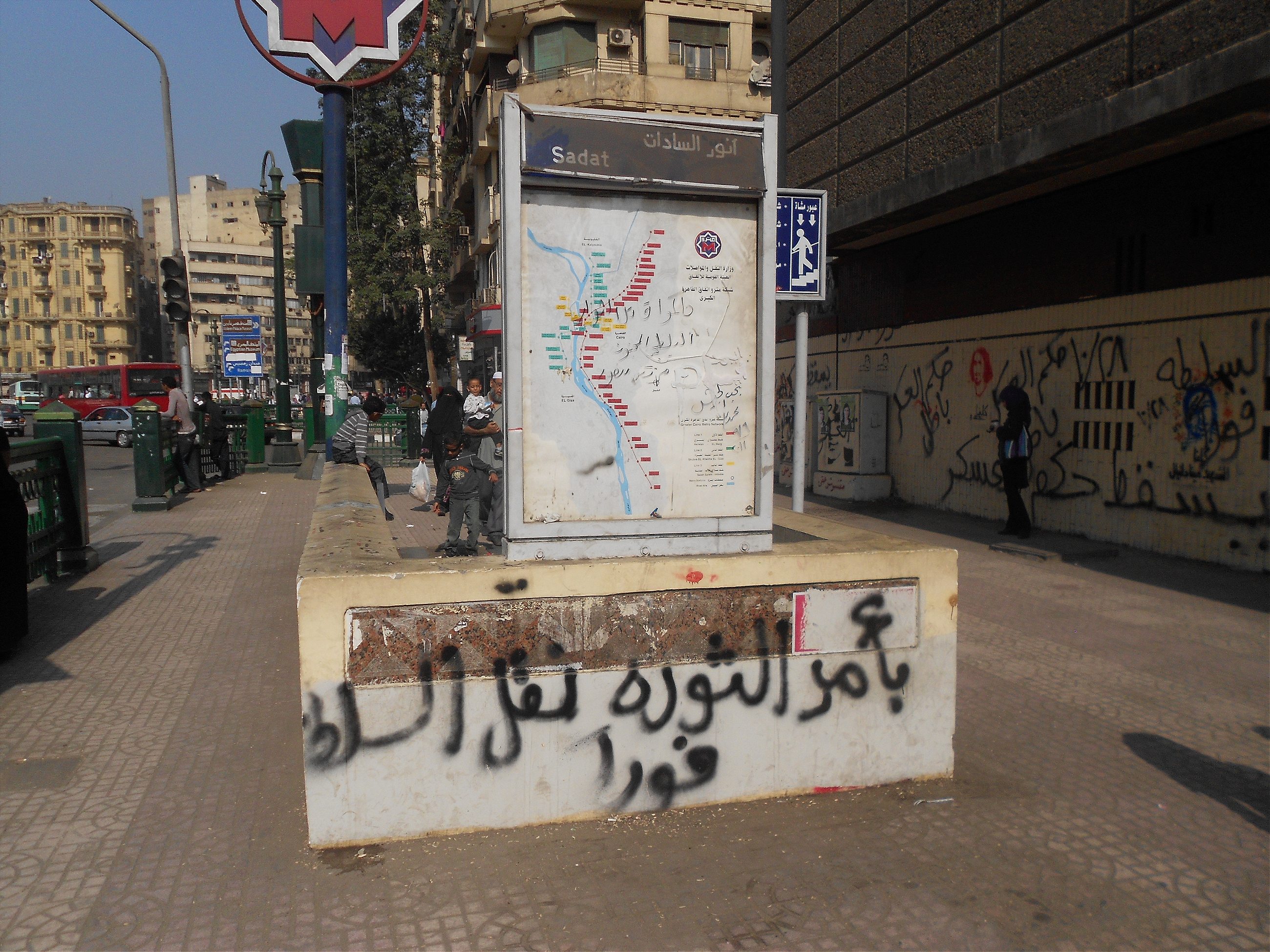
Sadat was also one of two metro stations where users could switch between Cairo’s two main lines. That’s left the other stop, Al Shohadah (which was called Mubarak Station before the revolution), stretched to its limit. Trips anywhere can take twice as long. Anti-harassment groups say reports of sexual harassment in Al Shohadah are up. Now the metro whizzes past Sadat station, the lights eerily turned on in the otherwise empty station.
There are other changes, too. Construction on a third line financed by France, is now underway, and fittingly dubbed “Revolution Line.” Only a few stations are open so far, but the maps on these clean and air-conditioned cars already include all the new stations, a tantalizing look ahead. The third line is now even a popular cheap date spot. Planning for a fourth line, financed by Japan, has also been announced. Two more lines will follow. There’s even a new monthly swipe-card to purchase.
STILL MUCH IS IMPERVIOUS TO SISI’S IRON HAND
These projects were already in the works before Sisi came to power; but now these metro developments have also become part and parcel of Sisi’s imaging campaign to project order and progress in a country reeling from four years of upheaval. It’s easier to win points, after all, for building something new than for more subtly maintaining what already exists. Sisi’s even gone so far as to promise to build an entirely new capital (cost estimates range from $45-$300 billion) to replace Cairo, Egypt’s century-old seat of power.
Yet still much is impervious to Sisi’s iron hand. Inside the metro, another world screeches along in its own wild way. Informal vendors continue to fill the metro cars and riders continue to buy, despite the government’s forceful crackdown. In contrast to the sycophancy of media portrayals of Sisis and the “new Egypt,” riders openly complain about the deteriorating metro situation: the worsening congestion, the suffocating heat, and the seemingly nonexistent maintenance. Instead of fixing broken ticket-taking machines, a person is just stationed by the broken turnstile to take back your yellow ticket. The actual security is haphazardly implemented. There are big announcements about the metro projects—and then subtle delays. The inauguration of the third line was repeatedly put off, and no one would say why. It’s spontaneous order at Egypt’s finest.
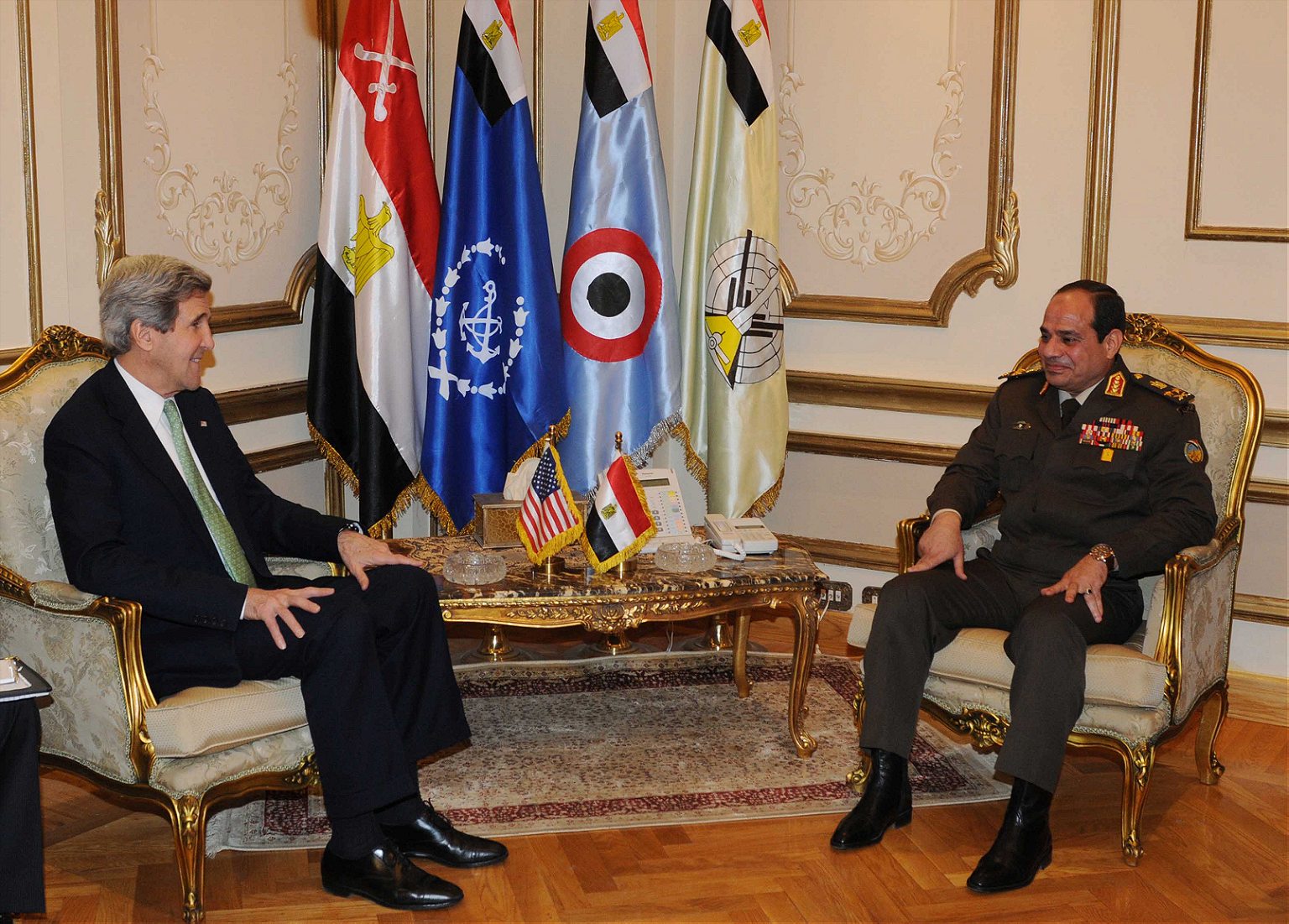
Despite this week’s crash, Cairo’s metro is actually quite safe: You’re more likely to get hit by a car above than harmed below. Sure, it has the reputation of being dirty and crowded and hot, which it is. Many upper class Egyptians are appalled at the idea of going down there. But still the metro comes and goes on a predictable basis. And at just one just one Egyptian pound (about $0.13) per ride, it’s a lifeline for millions of car-less Egyptians in a car-crazed place.
When the metro lines do come, the city will be better connected in a whole new way. Cairo traffic is a notoriously fearful force. It can mean hours lost to gridlock traffic and terribly unpredictable timing. Much of the city is also made of up informal settlements—or ashwaiyat—that haphazardly developed to meet the needs of a growing population and an unresponsive government. Easier access to a more effective metro can help cut the city’s isolation.
I have a soft spot for riding the metro. But it’s not always a pleasant ride. One day in 2012, during my first summer in Cairo, I was running late and dressed in a hurry in my dimly lit room. As I boarded the car everyone stared; suddenly I craved the forced anonymity of the New York subway. Here, as a white foreign-female, I could not blend in.
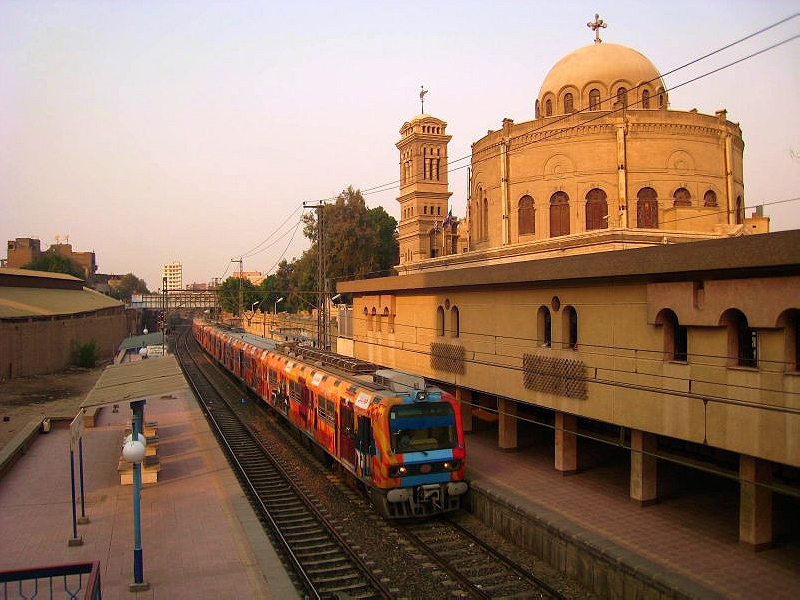
I decided early on that I would only ride the women’s cars. The first female-only car opened in 1990, soon after the metro began. Now there are two, and one technically turns mixed-gender after 9:30 p.m. At night men usually occupy both anyway. Sometimes the women and girls fight back, shouting the males off the car.
In the women’s cars nearly everyone is veiled in some way, from head to toe in a niqab to the shoulder covering khimar to headscarves of all prints and styles. There’s never just one look. If they aren’t veiled there’s likely a cross of some kind either tattooed on a wrist or on a chain around the neck to advertise their Christian faith. There aren’t many foreigners or well-off Egyptians riding the metro, either. Sometimes women will spend nearly the entire ride arguing that another deserved their seat more.
As we rode on, the metro vendors poured in. After the revolution, announcements in the metro warned people not to buy anything from the “dangerous” vendors. Since Sisi took over, his people have removed most of the informal vendors that had taken over Cairo’s downtown streets since the revolution. It’s part of his project, like it or not, of controlling crowds in public space. But the metro vendors keep vending.
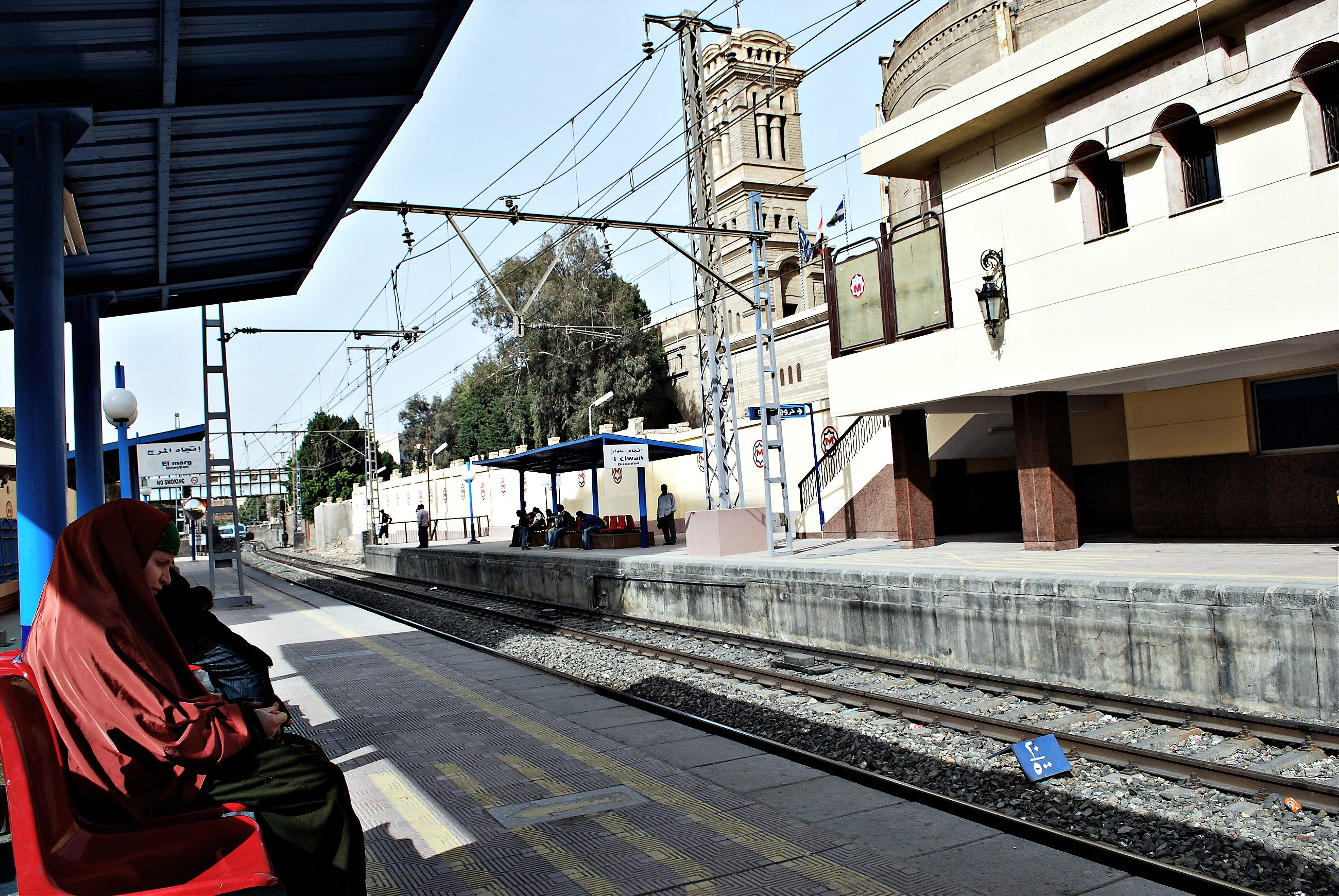
They pour into the cars, at times two or three at a time, selling anything from eyeliner to headscarves to vegetable peelers to children’s English books and colorful spandex. Sometimes it’s just kids selling polo mint roles cut into twos. In Cairo, consistent cash and work is hard to come by; instead, informal markets like this continue to thrive. Female metro riders complain about the vendors: they crowd the car, and the male vendors don’t belong. Yet still the women buy.
We traveled past the Sayeda Zeinab station, named for the famed-Sufi shrine nearby, and Mar Girgis, which leads to Coptic Cairo. Along the way there was the constant maneuvering of bodies and things as women and girls kept watch over who sat and stood, the old and those with children taking priority. In Maadi many of the African refugees and migrants board, their churches and NGOs located nearby. Unfortunately, they are often exposed to the Cairo metro’s racist side, subject to taunts and harassment based on their different dress and darker skin.
I was sweating and frustrated when I arrived at my destination, only to realize that my faux pas had been rather banal: My collared shirt was inside out and backwards. I looked entirely ridiculous.
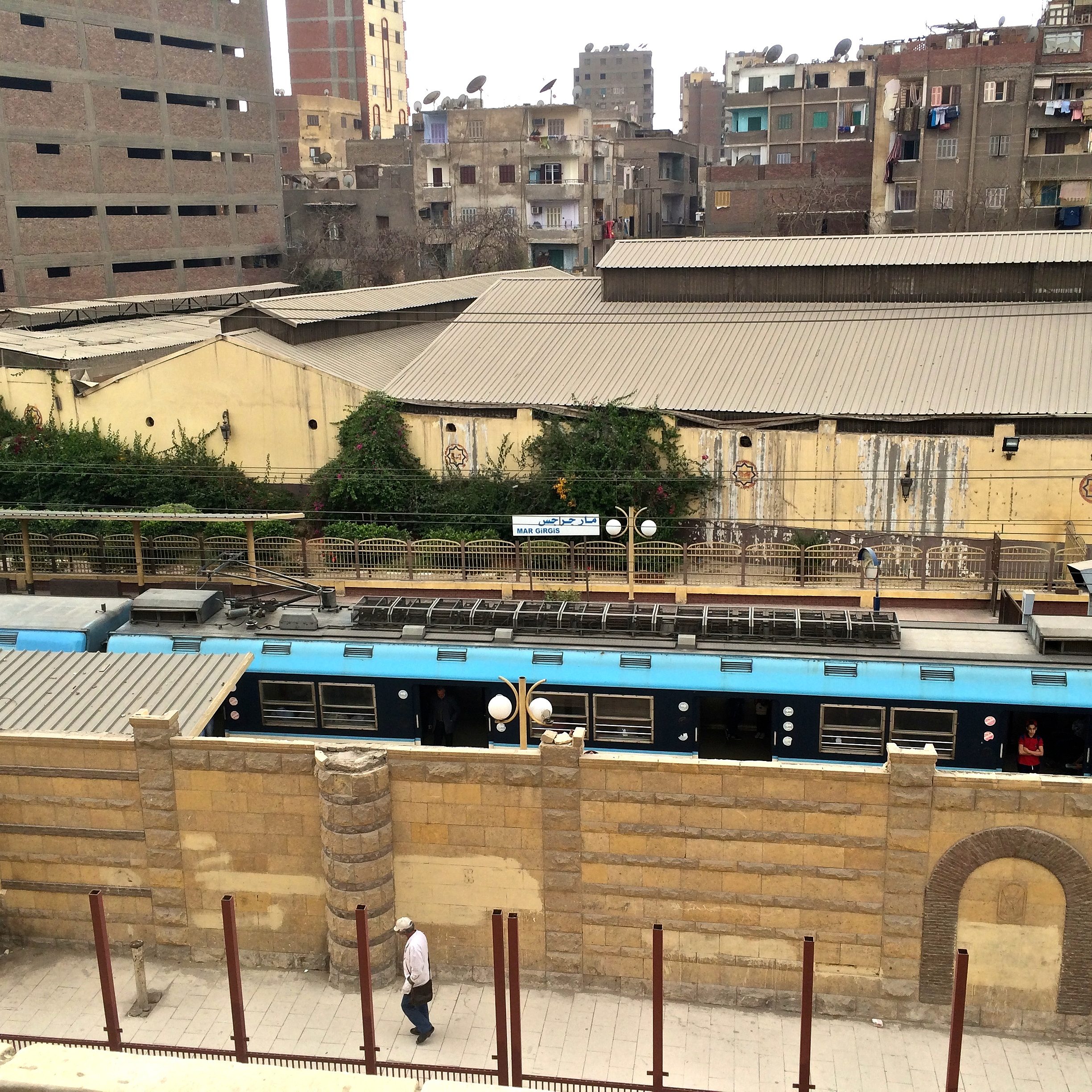
The many ministries and authorities that control the metro (it’s a decentralized mess) have shiny brochures with big numbers charting how many kilometers and cars and monthly passes there will be. In practice, there’s confusion. Last December the transport minister announced the city planned to raise the priceof the highly subsidized metro. It was losing too much money. Then the same minister denied such a plan. Finally Sisi intervened and calmed the crowd: No metro price rise now. Public discussion ceased.
AUTHORITIES NEVER SHUT DOWN THE METRO DURING THE REVOLUTION
It’s people like Arafat Rafaat who know what’s really happening. Arafat, 48, sells tickets behind a window at the Opera metro stop, one of the nicest stations. He has worked 12-hour shifts in metro stations for 18 years. We chat in April behind the ticket counter, the constant tick-tick of a small machine popping out finger-length tickets suddenly mixing with the call to prayer, which plays in all stations. Instead of raising the metro price, he told me, he knows where metro authorities could have cut spending. But the people are not their primary interest.
Arafat is also the head of the Independent Union of Egyptian Metro Workers, which he helped start in 2011 after the revolution. In 2012, his union led the first ever-metro strike since the system opened in 1987. For six hours workers kept the metro stopped, demanding a change in the transit authority’s leadership. It worked. Authorities never shut down the metro during the revolution, he boasted to me in April, but he and his colleagues did. His vision for the Cairo metro is seemingly simple: make it work. He has a lot of ideas how to do it.
Arafat said he supported the revolution, as did many of the metro workers. Since 2011, he’s watched it all pass through: the protests, the teargas, the violence, and now the tensions simmering under the calm. He remembered the protests days when people of all kinds of politics would mix in the metro and argue about it.
“And I think if there will be another revolution,” he told me, “the metro will be the central axis.”
Then he paused for a laugh.